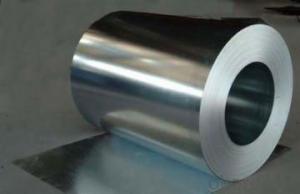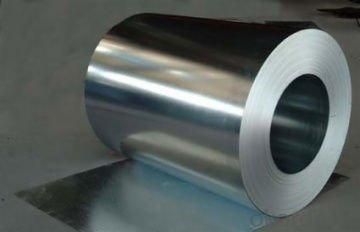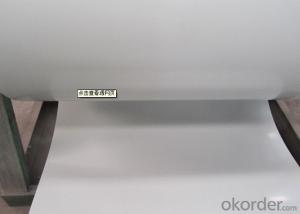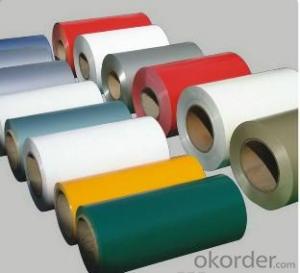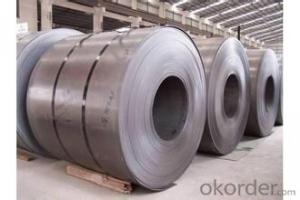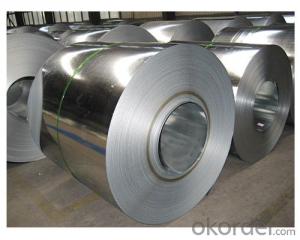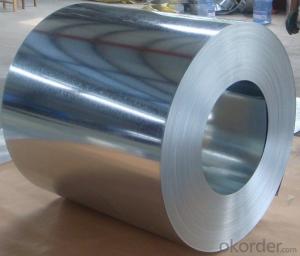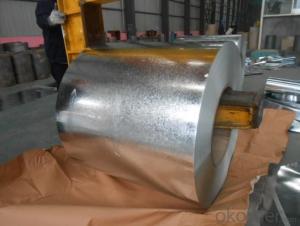Galvanized Steel Sheet in Ciols with Best Prime Quality
- Loading Port:
- Shanghai
- Payment Terms:
- TT OR LC
- Min Order Qty:
- 100 m.t.
- Supply Capability:
- 10000 m.t./month
OKorder Service Pledge
OKorder Financial Service
You Might Also Like
1.Structure of Galvanized Steel Coil Description:
Hot-dip galvanized steel coils are available with a pure zinc coating through the hot-dip galvanizing process. It offers the economy, strength and formability of steel combined with the corrosion resistance of zinc. The hot-dip process is the process by which steel gets coated in layers of zinc to protect against rust. It is especially useful for countless outdoor and industrial applications.
2.Main Features of the Galvanized Steel Coil:
• Base material for countless outdoor and industrial applications
• High corrosion resistance
• High strength
• Good formability
• Rust- proof ability
• Good visual effect
3.Galvanized Steel Coil Images
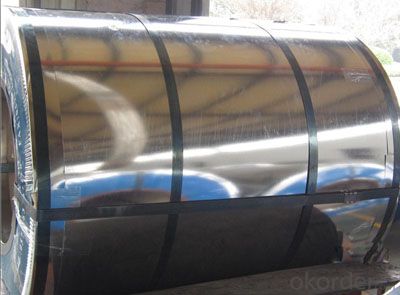
4.Galvanized Steel Coil Specification
Operate Standard: ASTM A653M-04/JIS G3302/DIN EN10143/GBT 2518-2008
Grade : SGCD,SGCH, Q195,DX51D
Zinc coating :40-180g( as required)
Width:914-1250mm(914mm, 1215mm,1250mm,1000mm the most common)
Coil id:508mm/610mm
Coil weight: 4-10 MT(as required)
Surface: regular/mini/zero spangle, chromated, skin pass, dry etc.
5.FAQ of Galvanized Steel Coil
We have organized several common questions for our clients,may help you sincerely:
1.How to guarantee the quality of the products?
We have established the international advanced quality management system,every link from raw material to final product we have strict quality test;We resolutely put an end to unqualified products flowing into the market. At the same time, we will provide necessary follow-up service assurance.
2. What is the minimum order quantity ?
Our MOQ is 50mt for each size. And we will consider to give more discount if you make big order like 1000 tons and more. Further more, the more appropriate payment term your offer the better price we can provide.
3.How long can we receive the product after purchase?
Usually within thirty working days after receiving buyer’s advance payment or LC. We will arrange the factory manufacturing as soon as possible. The cargo readiness usually takes 15-25 days, but the shipment will depend on the vessel situation.
- Q: What products can we make with steel (eg Steel strip, rod, bar, rail, tube) How are these made? What can we make from these steel products?Can you please make the answers as detailed as possible you can because i really want to know this really well. Thank you.
- Your okorder (they make steel deck and steel joists) There are thousands of other items routinely produced from steel, including rebar, and all the metal in cars, airplanes, and about a million other things.
- Q: What are the safety regulations for handling steel coils?
- The safety regulations for handling steel coils include wearing appropriate personal protective equipment, such as gloves and steel-toed boots, using proper lifting techniques and equipment, ensuring a clear and organized work area, and following guidelines for stacking and securing coils to prevent accidents and injuries. Regular inspections and maintenance of equipment and storage areas are also crucial for ensuring safe handling of steel coils.
- Q: what does steel have inside of it that makes it rust.I need the answer fast!!!!!!!!!
- Steel is made by refining iron. Iron is mined as a red powdery ore. Unfortunately, when moisture and oxygen are present, the steel attempts to revert to its original state.
- Q: How are steel coils used in the manufacturing of agricultural trailers?
- Steel coils are used in the manufacturing of agricultural trailers as they provide strength and stability to the trailer's structure. These coils are typically shaped and welded to form the trailer's frame, ensuring durability and load-bearing capacity. Additionally, steel coils can be used to reinforce certain components of the trailer, such as the axles or suspension system, to enhance its overall performance and withstand the demands of agricultural work.
- Q: I would like to buy a new cold steel recon 1 folding knife. My concern is the knife is made in Taiwan, will the quality of blade/overall make is lower quality compare with those made in US/JAPAN? The plan is use as an EDC, any good suggestion with similar style? Most important to me is reliability, 2)sharpness, 3) maintance than 4)cost. Anyone can point me into right direction? Please share, Thanks in advance.
- Cold okorder /
- Q: How are steel coils used in the production of shipbuilding components?
- Steel coils are used in the production of shipbuilding components as they provide a strong and durable material for constructing various parts of ships such as hulls, decks, and bulkheads. These coils are processed and shaped into required forms, ensuring the structural integrity and stability of the ship.
- Q: I have a Victorinox Pioneer, and I recently filed a little metal off the blade for some jimping. Is the already stainless steel blade still stainless?
- Stainless steel knives, sinks, etc.may or may not be stainless steel all the way through. The question arises however, what Quality of stainless steel? For steel to be highly rust resistant, a minimum of 12% chromium must be added to the iron along with carbon (for hardness). Good food-grade stainless also is likely to contain nickel, niobium, molybdenum, and/or titanium. Victorinox has a pretty good reputation to protect so I would expect your blade is still stainless. Some good old American brand names however have been sold to marketers who outsource manufacturing to China and scrimp on the chromium and nickle content in their stainless products. That is why you can spend $50 at Lowes for a stainless steel barbeque tool set of fork, tongs, lifter etc and find them spotted with rust within a few months.
- Q: steel can be used to do?
- Stainless steel can be used to (1) industrial use stainless steel (2) building decoration use stainless steel;(3) medical equipment (4) life with stainless steel tableware and the Jawaysteel is a great Chinese company, offer various kinds of stainless steel Maybe you can to their advice
- Q: How are steel coils used in the production of steel clamps?
- Steel coils are used in the production of steel clamps as they serve as the main raw material for creating the clamps. The steel coils are first processed and transformed into the desired shape and size through cutting, bending, and shaping processes. These coils are then formed into the clamp's body, providing the necessary strength and durability. Overall, steel coils play a crucial role in manufacturing steel clamps by providing the essential material for their construction.
- Q: So I want to get my 3+ wood shafted with a dynamic gold shaft because i need a stiffer shaft but dont want to spend much on it.I've never swung a steel shafted wood, but I hear that it is more consistent that graphite....Plus, since the cost of steel is only $15 compared to the $65 graphite, not to mention installation charges.So yeah...... How good is steel for fairway woods?BTW, my swing speed is about 95 but i can amp it up to 110 (with control, that is)
- There are very few people who hit steel shafted fairway woods. Tiger Woods used to have a steel shafted 3 wood but went to graphite because it didn't feel right because of his driver. Go get custom fit for a shaft and see if a steel shaft is good to make sure because you don't want to turn aroung a get a graphite shaft anyway if the steel shaft doesn't work. Go with whatg works the first time so you don't put out more money later.
Send your message to us
Galvanized Steel Sheet in Ciols with Best Prime Quality
- Loading Port:
- Shanghai
- Payment Terms:
- TT OR LC
- Min Order Qty:
- 100 m.t.
- Supply Capability:
- 10000 m.t./month
OKorder Service Pledge
OKorder Financial Service
Similar products
Hot products
Hot Searches
Related keywords
